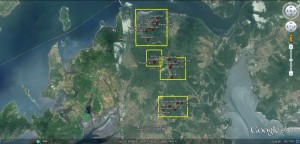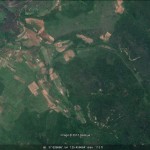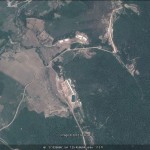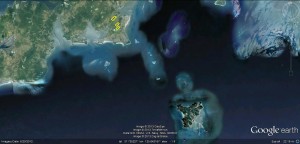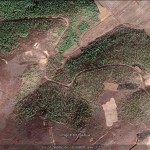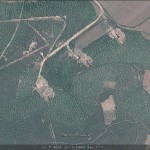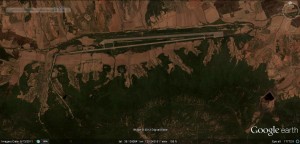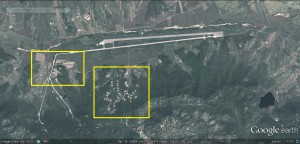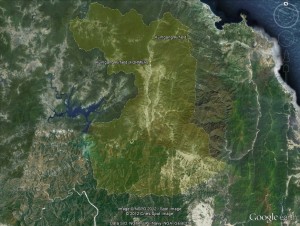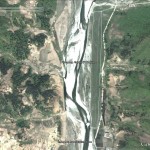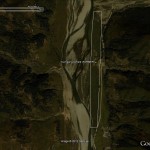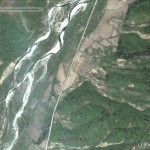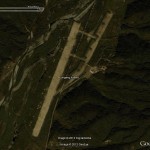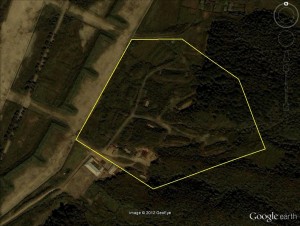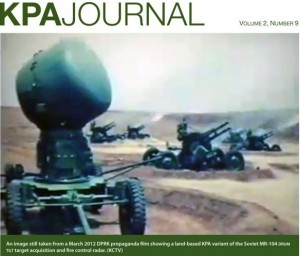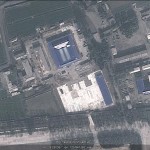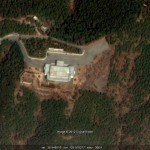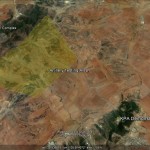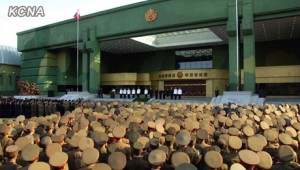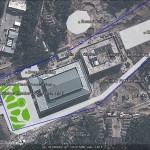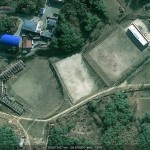On December 12, 2012 the DPRK announced the lunch of Unha 3-2, the second launch of 2012. I have posted a collection of information below. The Wikipedia page is here. Orbital info here and here.
———————–
UPDATE 26 (2013-2-27): The DPRK has formally registered its “satellite” with the UN. According to KCNA:
DPRK’s Satellite Officially Registered at UN
Pyongyang, February 27 (KCNA) — The DPRK presented its paper for the registration of its satellite Kwangmyongsong 3-2 at the UN as a signatory to the “Convention on Registration of Objects Launched into Outer Space” after its successful launch on December 12, Juche 101 (2012).
Recently the UN Space Office worked out UN official document (ST/SG/SER. E/662) as regards the registration of the DPRK’s satellite and posted it on the satellite registry of its website and the UN electronic archives website respectively. This brought to an end the work for registering the DPRK’s satellite launched after going through a legitimate procedure according to international law concerned.
Martyn Williams has more.
UPDATE 25 (2013-2-22): Markus Schiller’s Analysis of North Korea’s Unha-3 Launcher.
UPDATE 24 (2013-2-14): 38 North on new developments at the Tonghae launch site.
UPDATE 23 (2013-2-12): KCNA:
Political Bureau of WPK Central Committee Meets
Pyongyang, February 12 (KCNA) — A meeting of the Political Bureau of the Central Committee of the Workers’ Party of Korea (WPK) took place here on Monday.
Present there were members of the Presidium, members and alternate members of the Political Bureau of the Central Committee of the WPK.
The meeting adopted a decision “On marking the 65th anniversary of the DPRK and the 60th anniversary of the victory in the Fatherland Liberation War as grand festivals of victors”.
The decision emphasized the need to further deepen and accomplish the sacred cause of holding in high esteem the great Comrade Kim Il Sung and Comrade Kim Jong Il as eternal leaders of the WPK and the revolution.
The decision called for splendidly and significantly organizing political events marking the 60th anniversary of the victory in the Fatherland Liberation War and the 65th anniversary of the DPRK.
According to it, various political events will be held with splendor to mark the 60th anniversary of the victory in the Fatherland Liberation War. They will include a parade of the Korean People’s Army (KPA), mass demonstration of Pyongyang citizens, grand mass gymnastic and artistic performance “Arirang” and army-people joint meeting with war veterans.
The decision stressed the need to successfully rebuild the Victorious Fatherland Liberation War Museum and spruce up the revolutionary battle sites, revolutionary sites and revolutionary museums including the revolutionary museum at Kim Il Sung University, the Museum of the Fatherland Liberation War and the Jonsung Revolutionary Museum.
It called for newly building a martyrs cemetery of the KPA in Pyongyang and sprucing up KPA martyrs cemeteries and monuments to the fallen fighters of the KPA in various parts of the country.
It underlined the need to resolutely foil all the hostile forces’ moves to isolate and stifle the DPRK by achieving proud victory in building an economic power and improving the people’s living standard.
It also underscored the need for all fields and units to do a lot of good works for the prosperity of the country and its people’s happiness on the occasion of the 65th birthday of the Republic.
It called for staging an all-out action of high intensity for reliably protecting the security and sovereignty of the country in view of the prevailing grave situation and marking the 65th anniversary of the DPRK and the 60th anniversary of the victory in the Fatherland Liberation War with fresh achievements in bolstering up capability for self-defence.
It stressed the need to continue launching satellites of Kwangmyongsong series and powerful long-range rockets.
It called on the KPA to keep itself fully ready for combat and put maximum spurs to rounding off its combat preparedness in order to bolster up one-beats-a hundred combat capability. It stressed that once an order is issued, the KPA should blow up the stronghold of aggression at a strike and wipe out the brigandish U.S. imperialists and south Korean puppet army to the last man and thus accomplish the historic cause of national reunification.
The decision called for sincerely helping the army and significantly conducting the work for putting forward and preferentially treating the war veterans and wartime merited persons as a social movement on the occasion of the 60th anniversary of the war victory.
It underscored the need to give further spurs to building a highly civilized socialist nation.
It referred to the tasks for completing the preparations for the universal 12-year compulsory education within this year, establishing a medical information service network and telemedicine system, building a children’s hospital, a dental hospital and a recovery center and winding up the first phase project for updating the Hungnam Pharmaceutical Factory.
It also underscored the need to build a modern combined center for sports trainings and different kinds of mass sporting facilities and raise hot wind of sports throughout the country.
It called for face-lifting the central part of Pyongyang and building more modern cultural facilities including pleasure grounds and Munsu Wading Pool.
The decision stressed the need to arouse all compatriots to the struggle for resolutely foiling the anti-DPRK moves and “sanctions” racket of the U.S. imperialists and the south Korean puppet group of traitors and thoroughly implementing the June 15 joint declaration and the October 4 declaration so as to open up a new phase for national reunification.
It called for conducting external activities to grandly celebrate the 60th anniversary of the victory in the Fatherland Liberation War as a common event for the anti-imperialist independent forces and the world progressive people.
More in the NY Times here.
UPDATE 22 (2013-1-22): UNSC adopts resolution in response to DPRK rocket launch. According to Reuters:
The U.N. Security Council on Tuesday unanimously condemned North Korea’s December rocket launch and expanded existing U.N. sanctions, eliciting a vow from Pyongyang to boost the North’s military and nuclear capabilities.
Even though the resolution approved by the 15-nation council does not impose new sanctions on Pyongyang, diplomats said Beijing’s support for it was a significant diplomatic blow to Pyongyang.
The resolution said the council “deplores the violations” by North Korea of its previous resolutions, which banned Pyongyang from conducting further ballistic missile and nuclear tests and from importing materials and technology for these programs.
It also said the council “expresses its determination to take significant action in the event of a further DPRK (North Korean) launch or nuclear test.”
North Korea reacted quickly, saying it would hold no more talks on the de-nuclearization of the Korean peninsula and would boost its military and nuclear capabilities.
“We will take measures to boost and strengthen our defensive military power including nuclear deterrence,” its Foreign Ministry said in a statement carried by state news agency KCNA.
Six-party talks aimed at halting North Korea’s nuclear program have involved North Korea, the United States, China, Japan, Russia and South Korea. They have been held intermittently since 2003 but have stalled since 2008.
South Korea says the North is technically ready for a third nuclear test, and satellite images show it is actively working on its nuclear site.
The U.N. resolution added six North Korean entities, including Pyongyang’s space agency, the Korean Committee for Space Technology, and the man heading it, Paek Chang-ho, to an already existing U.N. blacklist.
CHINA WANTED ‘CAUTIOUS RESOLUTION’
The firms and individuals will all face an international asset freeze, while Paek and the others blacklisted by Tuesday’s resolution – the manager of the rocket launch center and two North Korean banking officials – will face a global travel ban.
In addition to the space agency, the council blacklisted the Bank of East Land, Korea Kumryong Trading Corp., Tosong Technology Trading Corp., Korea Ryonha Machinery Joint Venture Corp., and Leader (Hong Kong) International. The last, based in Hong Kong, is the North’s main arms dealer, the resolution said.
U.S. Ambassador to the United Nations Susan Rice welcomed the resolution, describing it as introducing “new sanctions” against North Korea. “This resolution demonstrates to North Korea that there are unanimous and significant consequences for its flagrant violation of its obligations under previous resolutions,” she said.
Other diplomats, however, said on condition of anonymity that saying the measures in Tuesday’s resolution were new sanctions would be an exaggeration.
China said on Monday that the Security Council needed to pass a cautious resolution on North Korea, adding that this was the best way to ensure regional tensions did not escalate further.
Several diplomats said Beijing’s decision to back the resolution sent a strong message to Pyongyang.
“It might not be much, but the Chinese move is significant,” a council diplomat told Reuters. “The prospect of a (new) nuclear test might have been a game changer (for China).”
The United States had wanted to punish North Korea for the rocket launch with a Security Council resolution that imposed entirely new sanctions against Pyongyang, but Beijing rejected that option.
China is the North’s only major diplomatic ally, although it agreed to U.N. sanctions against Pyongyang after North Korea’s 2006 and 2009 nuclear tests.
December’s successful long-range rocket launch, the first to put a satellite in orbit, was a coup for North Korea’s young leader, Kim Jong-un.
North and South Korea are still technically at war because their 1950-53 conflict ended in a truce, not a treaty.
UPDATE 21 (2013-1-21): According to the BBC, the Unha 3-2 was manufactured domestically:
South Korean military and space experts salvaged 10 pieces of the rocket which it shed into the sea as it took off, including its first-stage engine, and its fuel and oxidiser tanks.
In its report, the South Korean Defence Ministry said: “North Korea is believed to have made a majority of components itself, although it used commercially available products imported from overseas.”
The BBC’s Lucy Williamson in the South Korean capital, Seoul, says this will be unwelcome news to many countries as they consider what the military applications of such technical ability could be.
Such rockets are technically similar to intercontinental ballistic missiles, which could reach the United States, she adds.
Here is a photo from the report. Here is more on the report.
UPDATE 20 (2013-1-18): China will not block further UNSC action. According to Bloomberg:
China’s apparent decision not to block expanded United Nations sanctions against North Korea for its satellite-cum-missile launch last month is good, if mysterious, news. Good, because China has traditionally resisted punishing North Korea for its misdeeds, arguing that engagement is more likely to bring results. Mysterious, because its reasons for changing its mind could be manifold.
Yuriko Koike, Japan’s former Minister of Defense and National Security Adviser, recently speculated that North Korea went ahead with the launch as a way of “blackmailing” its ally to support it. Because the launch right before elections in South Korea and Japan would strengthen hardliners in both countries, China would feel compelled to support North Korea in response. As Koike put it, “In Kim [Jong Un’s] perverse logic, a new push for UN sanctions, and new security-conscious governments in Japan and South Korea, will strengthen North Korea’s hold on Chinese foreign policy.”
China’s decision suggests that Kim may have miscalculated. It could also mean, though, that the Chinese are worried that North Korea is getting increasingly hard to control, and that we should gird ourselves for more bad behavior — like, say, a third nuclear test. Its second nuclear detonation took place in May 2009 — shortly after its April 2009 launch of a rocket had been condemned by the UN Security Council.
The sanctions currently in place could use some tightening, starting with better implementation. In that respect, China’s decision to go along — or at least not stand in the way — represents a diplomatic victory for President Barack Obama’s administration. But past experiences with the North Koreans suggest that such measures rarely yield the desired result.
Yonhap has more here.
UPDATE 19 (2013-1-18): Marcus Noland has pictures of new stamps featuring the Unha rockets.
UPDATE 18 (2013-1-14): Japan plans to expand bilateral sanctions.
UPDATE 17 (2012-12-25): Martyn Williams has video of the satellite orbiting earth.
UPDATE 16 (2012-12-24): The Central Committee of the Workers’ Party of Korea gave a grand banquet at the Mokran House on Friday in honor of scientists, technicians, workers and officials who made a contribution to the successful lift-off of satellite Kwangmyongsong 3-2. See the video here.
UPDATE 15 (2012-12-21): North Korea to become strong in science and technology by year 2022
Institute for Far Eastern Studies (IFES)
North Korea is claiming its recent satellite launch on December 12, 2012 was part of a five-year plan for the development of science and technology.
According to the Choson Sinbo, a Japan-based pro-North Korean newspaper, the launchings of the Kwangmyongsong-2 and -3 satellites are directly related to the third Five-Year Plan for the development of science and technology. The paper also emphasized that the ultimate goal was to make North Korea a science and technology powerhouse by the year 2022.
The news summarized an article written by Professor Lim Jong-Hyuk of the Chongryon-affiliated Chosun University in Japan, explaining that the third Five-Year Plan for the development of science and technology began from 2008, making this year the last year of the plan.
According to Lim, this plan was created in order to solve the food shortage and improve the livelihoods of the North Korean people through the development of science and technology, including major research in information technology (IT), biotechnology (BT), and nanotechnology (NT) as well as energy development, nuclear technology, space technology, marine technology, and laser and plasma technology.
The professor claimed the recent launch was a part of this Five-Year Plan as the development of the space technology sector included the development of ultra-compact satellite and introduction of GPS (global positioning system) and GIS (geographic information system).
He further explained the first Five-Year Plan for science and technology development began in 1998. The initial goal of that plan was to solve the problem of science and technology necessary for the reconstruction of important sectors of the North Korean economy. At the same time, it sought to make pioneering efforts into new fields of science and technology, including IT, space technology, and marine science.
The second plan, which began in 2003, focused on introducing and developing basic sciences, such as mathematics, physics, and chemistry in order to modernize major sectors of the economy.
However, some are refuting the claims of Professor Lim, saying that the first plan began in 2003 and not in 1998. Ri Mun Ho, the Director of (DPRK) National Academy of Sciences, stated in a June 2006 interview with Choson Sinbo that Kim Jong Il made a field visit to the Hamheung Branch of the National Academy of Sciences in March 1999, directing for a five-year plan for the science and technology sector.
Some speculate that this is a deliberate misreporting of the starting date of the first plan to coincide with the 1998 rocket launch, North Korea’s self-proclaimed first attempt at putting an experimental satellite, the Kwangmyongsong-1, into space.
In the same interview, Ri explained that since 2004, North Korea began to install various economic management institutions in the Cabinet and other central government agencies to develop the research in science and technology sectors, since such was considered to be linked directly to the country’s economic development.
UPDATE 14 (2012-12-18): The DPRK’s satellite appears to be wobbling on its orbit which makes some wonder if the DPRK has control over it. According to the Los Angeles Times:
Is North Korea’s satellite dead in orbit? Launched last week, the spacecraft seems to be tumbling overhead, according to astronomers keeping track of the device.
“At this stage I’m getting a bit skeptical,” Jonathan McDowell, an astronomer with the Harvard-Smithsonian Center for Astrophysics, said in an interview. “I would start to be mildly surprised if the satellite is really working.”
Retired astronomer Greg Roberts in Cape Town, South Africa, measured the light coming from the satellite orbiting roughly 300 miles above the Earth’s surface and found that it seems to grow bright and dim by turns, indicating that it’s spinning as it flies through space, McDowell said. If the satellite were working, it probably wouldn’t spin — it would have to keep the one side of its body with its camera pointed consistently at Earth.
What’s more, trackers looking for the patriotic songs that were supposed to be broadcast from the satellite have yet to pick up the signal, he added.
But the mere fact that the spacecraft made it to orbit is probably success enough for North Korean leaders, McDowell said.
“In any case, they have joined the club of space-faring nations,” McDowell said. “That is the main point for them, for this launch.”
UPDATE 13 (2012-12-17): Jeffrey Lewis has analysis on the construction of the rocket here.
UPDATE 12 (2012-12-14): The Daily NK reports on the DPRK’s media effort to tie the successful launch with Kim Jong-un.
UPDATE 11 (2012-12-14): Kim Jong-un visits the Sohae Space Center (서해위성발사장, Tongchang-ri):
UPDATE 10 (2012-12-14): The DPRK holds mass rally in support of the rocket launch.
UPDATE 9 (2012-12-14): NPR explores the relationship between the DPRK’s and Iran’s rocket programs:
U.S. officials say the satellite put into orbit by North Korea’s rocket launch this week is wobbling, but that doesn’t necessarily mean the launch itself was unsuccessful.
U.S. analysts say the North Koreans’ main goal was not to put a satellite into orbit, but just to see all three stages of their rocket work, to show that the rocket could carry its payload a long distance. That it did. In the last test, in April, the first rocket stages worked as designed, but the third stage failed. Charles Vick, a missile expert at GlobalSecurity.org, credits the North Koreans with learning from their past mistakes.
“They have demonstrated not merely an ability to identify problems, but to resolve those problems and get the total system to work together, all three stages working as a single launch vehicle,” he said.
So, the North Koreans are making progress.
Next question: What, if anything, did this launch mean for Iran?
Iran denies missile ties.
UPDATE 8 (2012-12-13): Evan Ramstad writes in the Wall Street Journal’s Korea Real Time:
North Korea’s rocket shot on Wednesday may have been the greatest success it has yet had in a decades-long effort to develop the technology for long range missiles. But there’s also less to it than meets the eye.
A technical report published by the Rand Corporation in September concludes that the threat posed by North Korea’s missile program is not as significant as widely portrayed. It says the main driver the North Korea regime is political: “to create the impression of a serious missile threat and thereby gain strategic leverage, fortify the North Korean regime’s domestic power, and deter other countries, particularly the Republic of Korea and the United States, from military action.”
The author of the study, Markus Schiller, a missile expert at Schmucker Technologie in Germany, said in an e-mail interview that Wednesday’s launch doesn’t change his conclusions about the North’s missile capabilities or intentions.
“There is no need to reconsider any conclusions or recommendations of the report,” he said. He noted this is the country’s only success of long-range technology from five launches over nearly 15 years and was a “rocket that uses old Russian engines.”
“I would say that a North Korean cargo ship, or an airliner from Koryo Air, is more dangerous,” he added, referring to the North’s state-run airline. “If they wanted an ICBM [intercontinental ballistic missile], they have to develop a new rocket, using different technology. This would take a very long time, require a lot of work, and cost a lot of money.”
He said the rocket that North Korea launched on Wednesday is not powerful enough to carry a nuclear warhead very far. Its satellite payload may have only weighed 100 kilograms (220 pounds), while a warhead would be five to seven times heavier. “The whole rocket’s performance is too low to be used as an ICBM, even in three stage configuration,” he said.
Using the Soviet-era technology that was the basis for the rocket fired on Wednesday, Mr. Schiller estimates North Korea would need to build a rocket that’s two to three times larger to hit the U.S. The alternative, he said, is to use different technology and more efficient propellants. “But this is a completely new rocket,” he said.
He added that North Korea also needs to demonstrate that it can design complex warheads that can withstand the heat and acceleration that an ICBM goes through when it re-enters the atmosphere.
In his paper for Rand, Mr. Schiller recommends that policymakers in other countries not get overly concerned about the North’s missile tests. “Don’t elevate the North Korean threat,” he wrote. “This is exactly what the North Korean regime wants.”
That has sparked some criticism from with other analysts and North Korea watchers. But even the most hawkish analysts say that North Korea is far from posing a real danger with its long-range missiles.
Bruce Bechtol, a former U.S. military intelligence analyst who now teaches at Angelo State University in Texas, said that North Korea has several hurdles to overcome, including miniaturizing a warhead and deploying its long-range missiles in a way that can’t be detected. “It takes several days for them to set it up,” he said. “If see them setting it up, we could take it out.”
And he noted that, if North Korea wants want to sell the technology to countries like Iran, they’ll face difficulties shipping parts by sea and air. “They still have several issues,” Mr. Bechtol said.
UPDATE 7 (2012-12-13): Here are additional articles in KCNA:
Kim Jong Un Observes Satellite Launch Processes
Pyongyang, December 13 (KCNA) — The dear respected Marshal Kim Jong Un, first secretary of the Workers’ Party of Korea (WPK), first chairman of the National Defence Commission (NDC) of the DPRK and supreme commander of the Korean People’s Army, gave a final written order regarding the launch of the second version of Kwangmyongsong-3 to the Korean Committee of Space Technology at 8 a.m. on December 12, 2012.
He visited the General Satellite Control and Command Center at 9 a.m., one hour before the launch.
Kim Jong Un learned about the preparations for the launch and issued an order on the launch and keenly observed the whole processes of the launch.
Kim Jong Un expressed great satisfaction over the successful launch of the satellite by our scientists and technicians and highly estimated their feats. He extended thanks to them in the name of the WPK Central Committee.
The second version of scientific and technological satellite Kwangmyongsong-3 is Juche satellite in every aspect as it was developed and manufactured by the DPRK with its own strength, technology and wisdom, he said, saying with pleasure that successful and accurate entry of the satellite into its pole-to-pole trajectory further consolidated the status of the DPRK as a space power and demonstrated that the country has reached the highest level in terms of cutting-edge science and technology.
The successful launch of the satellite served as an occasion that showed at home and abroad the unshakable stand of the WPK and the DPRK government to exercise the country’s legitimate right to use space for peaceful purposes and to develop the country’s science, technology and economy, he noted.
The launch was successful even though it was made in the winter time when difficult scientific and technological problems arise, he said, adding that this is a proud victory that demonstrated the high level the country’s science and technology have reached.
He stressed the need to continue to launch satellites in the future, too, to develop the country’s science, technology and economy.
Underscoring the need to bring about a fresh turn in scientific researches into space and satellite launch field based on the successful launch of the second version of satellite Kwangmyongsong-3, he set forth important tasks for doing so.
He repeatedly spoke highly of the ardent loyalty and patriotic devotion made by scientists and technicians who greatly contributed to strikingly displaying the might of science and technology of Juche Korea to the world and had a photo session with them.
He was accompanied by Jang Song Thaek, member of the Political Bureau of the Central Committee of the WPK and vice-chairman of the NDC, and Pak To Chun, member of the Political Bureau and secretary of the WPK Central Committee.
DPRK’s Satellite Launch Represents Its Sci-Tech Development
Pyongyang, December 13 (KCNA) — The successful launch of another satellite in the Democratic People’s Republic of Korea represented the nation’s sci-tech development and economic potentials.
Pak Chang Sop, a section chief of the IT Institute of Kim Il Sung University, told KCNA:
“The successful launch showcased the overall might of Songun Korea, and it is a great auspicious event of the nation that significantly adorned this year.
The success reminds me of the tireless efforts made by Generalissimo Kim Jong Il for the development of the national science. I would like to extend heartfelt greetings to the space scientists who implemented his behests.”
Pang Kwon Yong, an engineer of the Korean Computer Centre, said:
“The recent successful launch of satellite, a complex of science and technology, displayed again the might of the DPRK as a full-fledged satellite launcher.”
Kim Myong Chol, a researcher of the Central Meteorological Institute, said:
“The success is attributable to the policy of the Workers’ Party of Korea on giving importance to science.
The working satellite, launched this time, will be greatly conducive to our work as it is an earth observation one.”
DPRK Has Earth Observation Technology: Scientist
Pyongyang, December 13 (KCNA) — The DPRK successfully launched the second version of satellite Kwangmyongsong-3 on Wednesday.
In this regard, KCNA met Kim Hye Jin, a section chief of the General Satellite Control and Command Center.
Kim said:
“The second version is an earth observation satellite going round the sun-synchronous orbit.
As such kind of satellite requires ultra modern technologies, many countries launch satellites atop others’ carrier rockets.
We found out shortcomings in April’s failed satellite launch and solved them.
Those opposed to the DPRK’s development of space science would be surprised by its successful satellite launch.
The DPRK’s satellite launch is aimed to attain the technology for earth observation with its own satellites. Unlike the satellites launched in the past, the second version of Kwangmyongsong-3 is viewed as the start of the stage in which satellites are actually used for the progress of the national economy. Its successful launch helps the DPRK fully gain up-to-date communications technology as well as earth observation technology.”
DPRK’s Satellite Enters Its Preset Orbit: Scientist
Pyongyang, December 13 (KCNA) — On Wednesday, journalists covered the details of the launch of the second version of satellite Kwangmyongsong-3 at the General Satellite Control and Command Center on the outskirts of Pyongyang City.
On the first hand, they watched videos on the Sohae Space Center in Cholsan County, North Phyongan Province, carrier rocket Unha-3 with a satellite atop and its flight.
The videos also included technical indices on flight track, the scene of the satellite launch and its entry into the orbit.
Kim Hye Jin, 44, a section chief of the center, told KCNA:
“We confirmed that the satellite was separated from the three-stage rocket.
The satellite is now airing ‘Song of General Kim Il Sung’ and ‘Song of General Kim Jong Il’. We are sure our technology of putting satellite into orbit is flawless. I think those countries developed in space science and technology can not but acknowledge it in view of our satellite flight track.”
UPDATE 6 (2012-12-13): Everybody was apparently caught off guard by the launch. According to the Choson Ilbo:
South Korea, the U.S. and Japan were apparently taken wholly by surprise when North Korea launched a rocket on Wednesday. The three countries had concluded only on Tuesday that there was no chance that the launch would take place this week or even this month.
Only a few days earlier, North Korea announced that a technical glitch had been detected and the launch window would have to be extended until Dec. 29
Defense Minister Kim Kwan-jin told lawmakers he did not know that the launch would go ahead. Military officials here detected activity at the launch site on Tuesday afternoon and reported it to Cheong Wa Dae, but apparently failed to identify signs of an imminent launch.
Japanese Defense Minister Satoshi Morimoto said Tokyo confirmed that North Korea removed the rocket from its launch pad on Tuesday and had started to disassemble it for repairs.
South Korea and Japan had apparently reached the conclusion based on photos taken by U.S. spy satellites.
“Military authorities may have been careless in preparing for a North Korean launch by simply trusting the North Korean announcement,” said one retired general here.
“We were fooled by North Korea because of weaknesses in intelligence gathering and faulty judgment,” he added.
And according to CNN:
“We had our dukes up, operationally, but we were caught off guard,” the official said.
“The clues point to a concerted effort to deceive us,” the official said. The analysis was ordered in the wake of the launch to determine what exactly happened and how much the U.S. intelligence knew at the time.
The official said one conclusion was that while missile defenses can fully protect against a North Korean attack, the North Koreans have shown they can counter U.S. measures to gather intelligence about what they are up to.
“Look, they know when our satellites are passing overhead,” the official said. It’s believed the North Koreans essentially manipulated the launch so U.S. intelligence satellites simply would not be overhead and able to see what was happening.
The most likely scenario, the official said, was that North Korea wasn’t telling the truth when it announced several days before the launch that there were technical problems with the missile.
According to the official, the intelligence analysis found that:
– The United States observed the North Koreans beginning to take apart the three-stage rocket and move parts of it away from the launch pad, then observed what were believed to be so-called replacement parts being moved in.
– In retrospect, those parts appear to have been from a second, older-generation long-range missile that were in storage. Those parts most likely were never used in the December 12 launch.
During this time, when the United States did not have total visibility of the launch site, it’s believed the North Koreans either quickly reassembled the original rocket and fired it.
– It’s also possible the U.S. miscalculated and the North Koreans never took it apart at all.
Earlier this week, South Korean defense officials warned that the latest North Korean missile had the capability to travel more than 6,000 miles, meaning this type of rocket could strike the United States. However, experts do not believe Pyongyang has a nuclear warhead small enough to fly on the kind of missile.
The South Koreans have also noticed that the DPRK has beaten them into space.
UPDATE 5 (2012-12-12): The White House has issued a formal response to the rocket launch:
Statement from NSC Spokesman Tommy Vietor on North Korea’s Missile Launch
North Korea’s launch today—using ballistic missile technology despite express prohibitions by United Nations Security Council resolutions—is a highly provocative act that threatens regional security, directly violates United Nations Security Council resolutions 1718 and 1874, contravenes North Korea’s international obligations, and undermines the global non-proliferation regime. This action is yet another example of North Korea’s pattern of irresponsible behavior. The United States remains vigilant in the face of North Korean provocations and fully committed to the security of our allies in the region. Given this current threat to regional security, the United States will strengthen and increase our close coordination with allies and partners.
On April 16, 2012, the United Nations Security Council expressed its “determination to take action accordingly in the event of a further [North Korean] launch.” In the hours and days ahead, the United States will work with its Six-Party partners, the United Nations Security Council, and other UN member states to pursue appropriate action. The international community must work in a concerted fashion to send North Korea a clear message that its violations of United Nations Security Council resolutions have consequences. The international community continues to insist that North Korea live up to its commitments, adhere to its international obligations, and deal peacefully with its neighbors.
North Korea is only further isolating itself by engaging in such provocative acts. Devoting scarce resources to the development of ballistic missiles and nuclear weapons has not brought it security and acceptance by the international community—and never will. North Korea will only truly strengthen itself by abiding by international norms, living up to its commitments and international obligations, and working to feed its citizens, to educate its children, and to win the trust of its neighbors.
UPDATE 4 (2012-12-12): Uriminzokkiri post video of rocket launch:
This video explains the launch from inside the rocket control center:
UPDATE 3 (2013-12-12): Scott Snyder on the DPRK’s rocket launch:
The task of responding to North Korea’s apparently successful satellite launch poses an immediate challenge to North Korea’s neighbors, each of which are in the middle of leadership transitions. The impending UN Security Council debate will come as an early test for China’s new leadership under Xi Jinping and as evidence that China’s comprehensive engagement strategy with North Korea has failed to restrain North Korean provocations. Since China’s overriding objectives toward North Korea remain stability and crisis avoidance, China will remain the main obstacle to any significantly punitive international response. It is likely only to agree to yet another ineffective UN presidential statement condemning the launch, resisting efforts to expand sanctions against North Korea.
North Korea’s satellite comes days before Japanese and South Korean voters go to the polls, raising the likelihood that national security will be on the minds of voters in both countries. LDP leader and likely next Japanese prime minister Shinzo Abe led the country’s strong response to North Korea’s 2006 rocket launch. His efforts resulted in the first UN resolution to criticize North Korean missile tests UN Security Council resolution 1695. South Korea has faced a long tradition of North Korean provocative actions designed to influence South Korean election outcomes, but it is unclear how a satellite launch could tilt South Korea’s electoral result in the North’s favor. The North has publicly opposed conservative candidate Park Geun-hye, but it is hard to say how a satellite launch helps opposition candidate Moon Jae-in or others who advocate a fast-track for reconciliation with the North.
UPDATE 2 (2013-12-12): The DPRK has apparently concluded is first successful “satellite” launch. According to KCNA:
DPRK Succeeds in Satellite Launch
Pyongyang, December 12 (KCNA) — The second version of satellite Kwangmyongsong-3 successfully lifted off from the Sohae Space Center in Cholsan County, North Phyongan Province by carrier rocket Unha-3 on Wednesday.
The satellite entered its preset orbit.
and here…
KCNA Releases Report on Satellite Launch
Pyongyang, December 12 (KCNA) — The Korean Central News Agency (KCNA) released the following report Wednesday:
Scientists and technicians of the DPRK successfully launched the second version of satellite Kwangmyongsong-3 into its orbit by carrier rocket Unha-3, true to the last instructions of leader Kim Jong Il.
Carrier rocket Unha-3 with the second version of satellite Kwangmyongsong-3 atop blasted off from the Sohae Space Center in Cholsan County, North Phyongan Province at 09:49:46 on December 12, Juche 101(2012). The satellite entered its preset orbit at 09:59:13, 9 minutes and 27 seconds after the lift-off.
The satellite is going round the polar orbit at 499.7 km perigee altitude and 584.18 km apogee altitude at the angle of inclination of 97.4 degrees. Its cycle is 95 minutes and 29 seconds.
The scientific and technological satellite is fitted with survey and communications devices essential for the observation of the earth.
The successful launch of the satellite is a proud fruition of the Workers’ Party of Korea’s policy of attaching importance to the science and technology. It is also an event of great turn in developing the country’s science, technology and economy by fully exercising the independent right to use space for peaceful purposes.
At a time when great yearnings and reverence for Kim Jong Il pervade the whole country, its scientists and technicians brilliantly carried out his behests to launch a scientific and technological satellite in 2012, the year marking the 100th birth anniversary of President Kim Il Sung.
UPDATE 1 (2013-12-8): The Unha 3, 3-2 rocket launches costs as much as a year of food supplies. According to the Hankyoreh:
The Ministry of Unification estimated the cost of North Korea’s two rocket launches this year to be nearly equivalent to a year’s worth of food for the country.
An official with the ministry told reporters on Dec. 6 that North Korea had spent a total of US$1.34 billion on rocket launches since the Kim Jong-un regime took power this in April of this year.
“This is enough money to buy a year’s worth of food for North Korea [5.3 million tons of corn], and we hope North Korea will put it toward solving its peoples’ food shortage,” the official said.
The official broke down the costs into US$400 million for building the launch site in Dongchang Village, US$600 million for the two launches, US$300 million to build rocket equipment and facilities, and US$42 million for propaganda idolization of the Kim dynasty.
This comes after recent – and much higher – Ministry of National Defense estimates that North Korea spent US$1.74 billion on missile development and US$1.1 billion-1.5 billion on nuclear development for a total of US$2.8 billion-3.2 billion.
The North Korean food demand for one year is equivalent to 5.3 million tons of corn, which is valued at US$1.5 billion according to international market rates. The country’s annual food shortfall is estimated at one million tons, or about US$300 million.
By this standard, the total of US$1.34 billion would be nearly equal to the annual cost of food and enough to cover the shortfall for four to five years.
Analysts said the ministry’s aim in comparing the rocket development costs with the North Korean food situation was to highlight the immorality of the regime in Pyongyang.
ORIGINAL POST (2012-12-7): David Wright has created a Google Earth file which shows the rocket trajectory we expect from the DPRK’s fourth launch. Download the file and learn more here.
